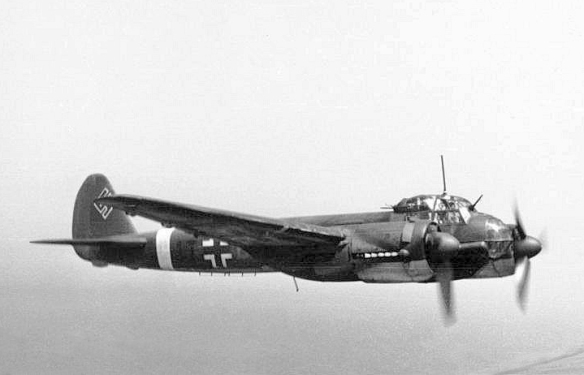Ju 88 bomber
The air raid on Bari was an air attack by German bombers on Allied forces and shipping in Bari, Italy, on 2 December 1943 during World War II. In the attack, 105 German Junkers Ju 88 bombers of Luftflotte 2, achieving complete surprise, bombed shipping and personnel operating in support of the Allied Italian campaign, sinking 27 cargo and transport ships and a schooner in Bari harbour.
SS John Harvey was a U.S. World War II Liberty ship carrying a secret cargo of mustard gas, whose sinking by German aircraft in December 1943 at the port of Bari in south Italy caused the single (and unintentional) release of chemical weapons in the course of the war by the Allies.
The attack, which lasted a little more than one hour, put the port out of action until February 1944 and was called the “Little Pearl Harbor”. The release of mustard gas from one of the wrecked cargo ships added to the loss of life. The British and US governments covered up the presence of mustard gas and its effects on victims of the raid.
On December 2, 1943, in what came to be referred to by some as a second Pearl Harbor, German JU- 88 bombers attacked the port city of Bari, Italy, sinking seventeen Allied ships and damaging several others. Among the American vessels fatally struck that night was the Liberty class cargo ship SS John Harvey, which, in addition to its typical load of conventional arms, food, and other supplies, carried 2,000 one-hundred pound M47A1 bombs filled with the blister agent sulfur mustard. Due to the sensitive nature of, and thus the compartmentalized information regarding this cargo, only a select few crew members were aware of this dangerous freight. Unfortunately, all of these crew members were killed in the attack, leaving medical personnel ashore unaware of the need to treat casualties for blister agent exposure. Of approximately 800 American military casualties hospitalized following the raid, more than 600 were eventually diagnosed with gas exposure, and 83 of those died. Numbers of civilian casualties are less well documented, but estimates run as high as 1,000.
Although he had issued a statement denouncing the use of chemical weapons by any actor in World War II, President Franklin Delano Roosevelt had also reserved the right to retaliate in kind if chemical weapons were used by the Axis. He therefore ordered mustard-filled munitions to be forward deployed in Europe to provide the capability to launch a retaliatory strike in the event that the Germans initiated gas warfare. In 1943, the Germans were on the defensive. As a consequence, or so the Allies believed, Germany could have been desperate enough to use poison gas on the battlefield. To avoid triggering a preemptive strike by Germany with chemicals, however, the presence of the Allies’ chemical munitions was kept secret. This was to play a tragic role in what transpired off the Italian coast.
Being oil miscible, liquid mustard released into the harbor waters mixed with oil from stricken vessels. This mustard agent came into contact with sailors who had dived into the water to escape their sinking ships. Sulfur mustard vapors were also released into the air. Because medical personnel were unaware of the mustard’s presence, rescued seamen were allowed to remain in their oil-soaked clothing while those injured in the blasts were treated, prolonging contact with the agent. Victims began to exhibit the delayed effects of mustard exposure within hours, with burns on their skin, swollen eyes and genitals, and temporary blindness. More serious casualties were those involving respiratory exposures of mustard agent.
After the bombing, medical personnel at Bari, finding the symptoms exhibited by their patients to be consistent with blister agent use, called for an investigation. U. S. Army Medical Corps Lieutenant Colonel Stewart Alexander, a chemical warfare expert, travelled to Bari, where he determined mustard to be the source of the non-blast casualties. In February 1944, the U. S. government issued a statement acknowledging the presence of mustard in the John Harvey’s cargo.
After the war, the United States disposed of unspecified amounts of phosgene, hydrogen cyanide, cyanogen chloride, and additional quantities of mustard off the coast near Bari. Studies performed by the University of Bari as recently as 1997 have discovered cases of mustard exposure among fisherman trawling these waters.
References Infield, Glenn B., Disaster at Bari (New York: Macmillan, 1971). 37 Reminick, Gerald, Nightmare in Bari: The World War II Liberty Ship Poison Gas Disaster and Coverup (Palo Alto, CA: Glencannon, 2001).
